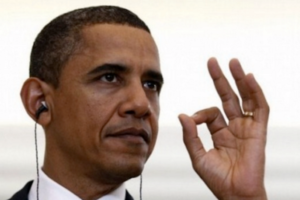Many states have underwent massive economic transformation the past 25 years as free trade policies such as NAFTA reduced barriers to entry for neighboring countries seeking to export their goods to America. North Carolina has been and continues to be a place where changes in economic identity have been on full display – recording deep job losses in manufacturing, textiles and furniture. From 1994 to 2016, the state loss over 340,000 jobs, with the percentage of all private sector jobs in manufacturing declining from 30% to 13%.
Needless to say, it comes as no surprise Mr. Trump carried the state, overcoming Hillary Clinton on a wave of anti-immigration rhetoric, anti-free trade and pledges to “bring jobs back” to struggling rural communities. You don’t have to enroll in a college economics class to quickly discover these claims are mostly empty – market economies simply evolve over time – embracing change is a smarter prescription.
One element of Trump’s immigration reform plan calls for the construction of a $20 billion wall on the southern border of the country to curtail illegal immigration from Mexico and other predominantly Hispanic countries. The wall would be funded through a border adjustment tax on imported goods, which has sparked controversy in a range of industries that rely on free trade policies, not to mention ordinary consumers routinely misunderstand the concept with tariffs – an entirely different revenue mechanism.
Border Adjustment Tax
A border adjustment tax (BAT) is a short name for a destination-based cash flow tax (DBCFT). Exported goods are exempt from tax; imported goods sold domestically are subject to the tax. The BAT levies a tax depending on where a good is consumed rather than where it is produced.
For example, if a corporation ships tires to Mexico where they will be used to make cars, the profit the tire company makes on the tires it exports isn’t taxed. However, if an American car company purchases tires from Mexico for use in cars made in America, the money it makes on the cars (including the tires) sold in the U.S. is taxed. In addition, the company cannot deduct the cost of the imported tires as a business expense.
Tariff
A tariff can be imposed to increase the price of imported goods and services, making them more expensive to consumers. A specific tariff is levied as a fixed fee based on the type of item (e.g., $1,000 on any car). An ad-valorem tariff is levied based on the item’s value (e.g., 10% of the car’s value). Tariffs provide additional revenue for governments and domestic manufacturers at the expense of consumers and foreign producers. They are one of several tools available to shape trade policy.
The primary differences between these policy tools – one is a tax imposed on actual profit and the other simply an imposed fee on production costs. This matters tremendously, because higher production cost is more easily passed to a consumer in the form of a higher retail cost, but a special tax on profit sourced from select imports can be more challenging to calculate and mitigate
Free Trade
Its true America doesn’t make the same products that once kept factories humming decades ago – cars are a prime example. Just as the “Industrial Revolution” transferred many jobs away from countries such as England, the “Globalization and Digital Movement” has adversely impacted America, as more jobs are offshored to Asia.
Free trade pacts such as NAFTA made our southern neighbors more attractive for traditional manufacturing, but we must not ignore that international competition has driven great strides in our domestic advanced manufacturing industries. The BAT and other protectionist trade measures create false hope that long passed jobs may return, but our focus must remain laser focused on positioning the workforce for those jobs and opportunities of the 21st century.




